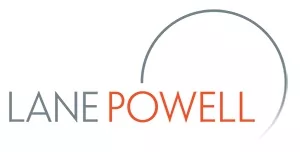You already know that ERISA imposes on employers the duty to provide a written plan document, and a Summary Plan Description (SPD) which states key plan terms.
And... Supreme Court precedent is clear that Summary Plan Descriptions "do not themselves constitute the terms of the plan for purposes of [ERISA]." CIGNA Corp. v Amara, 663 U.S. 421, 438 (2011)(Emph. in original).
Many employers with group life, health and disability plans assume materials provided by an insurer satisfy ERISA requirements.
BUT materials provided by insurers or third party administrators may not satisfy ERISA requirements. The Plan can be at a big disadvantage without a written plan or SPD when participants/beneficiaries sue seeking benefits.
Now a new Ninth Circuit case explains how "wrap documents" can establish plan terms required by ERISA, using the Summary Plan Description. Here's the case of Mull vs. Bd. of Dir. Motion Picture Hlth Pln No. 1, __ F.3d __ (9th Cir. August 1, 2017).
FACTS. After a serious auto accident, Mull sought ERISA-governed health benefits from a self-funded plan. The plan paid over $147,000 in medical benefits and sought reimbursement after Mull secured a $100,000 tort settlement. Mull sued seeking to enjoin the plan from seeking reimbursement. The Plan counterclaimed for reimbursement.
ISSUE: Whether a wrap document, indicating that a trust agreement and Summary Plan Description should be read together, established the ERISA plan?
DISTRICT COURT HELD: NO. Reimbursement provisions contained only in the Summary Plan Description are NOT part of the ERISA plan and are not enforceable.
NINTH CIRCUIT REVERSES. The plan's trust agreement, when read together with the Summary Plan Description, constituted an ERISA plan document.
- "Neither the Trust Agreement nor the SPD meets ERISA's requirements for constituting a plan. But by clear design reflected in provisions of both documents, the two documents together constitute a plan." Op. at 7. (Bold in original).
- "[Amara] did not address the situation...that a plan administrator seeks to enforce the SPD as the one and only formal plan document." Op. at 8.
- The Plan "clearly intended" by statements in the wrap document that "'the plan' is comprised of two documents: the Trust Agreement and the SPD." Op. at 6.
- "'[A]n SPD may constitute a formal plan document, consistent with Amara, so long as the SPD neither adds to nor contradicts the terms of existing Plan documents." Op. at 7.
- Since "there is no conflict between the SPD and the Trust Agreement[,] the SPD is part of the plan itself." Op. at 8.
KEY TAKEAWAYS.
- The DOL explains what should be in your plan document: The named fiduciary who has authority and responsibility to administer the plan; procedures for amending and terminating the plan; the source of plan contributions; and the allocation of responsibilities for the operation of the plan between the employer and the insurance carrier or third-party administrator. Here is the Department of Labor's Reporting and Disclosure Guide for Employee Benefit Plans.
- For what needs to be in the Summary Plan Description, see Department of Labor regulation (29 CFR 2520.102-3).
- A "wrap document" can help establish the ERISA Plan. The wrap document should expressly state that "the referenced documents are intended to constitute both the Plan document and the Summary Plan Description for the plan."
The content of this article is intended to provide a general guide to the subject matter. Specialist advice should be sought about your specific circumstances.

